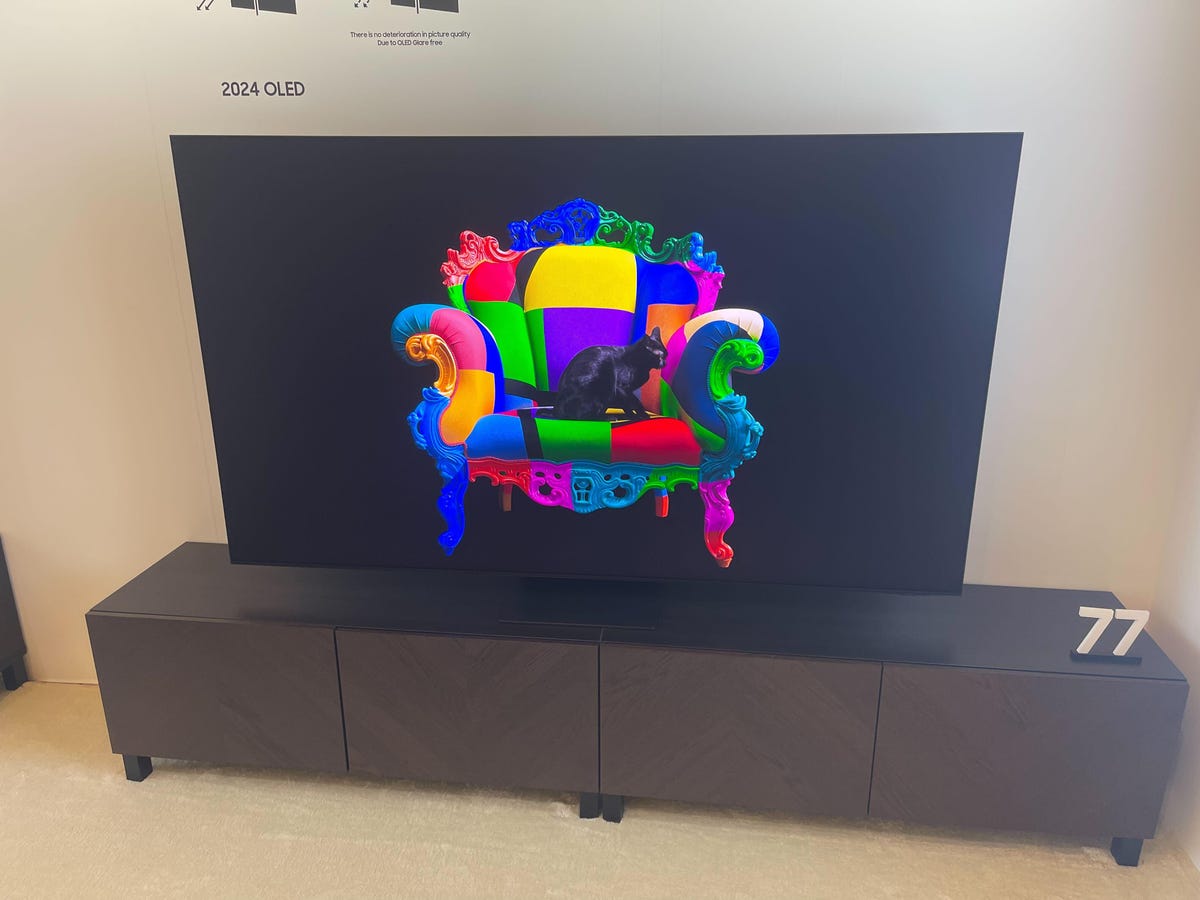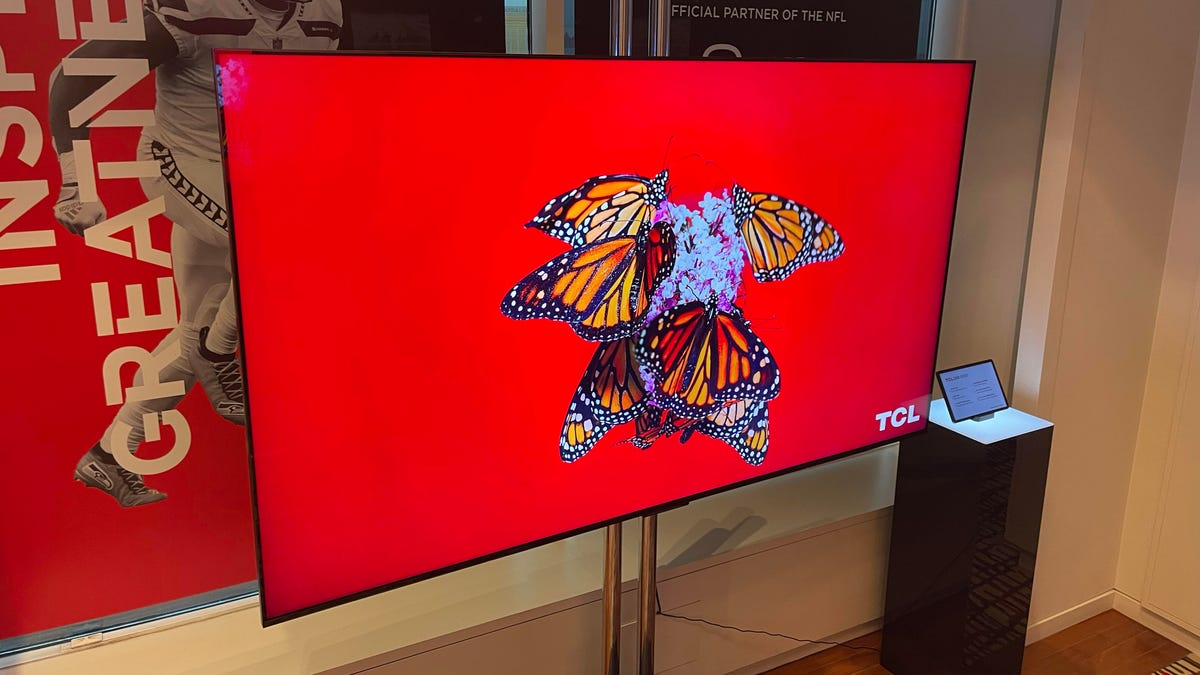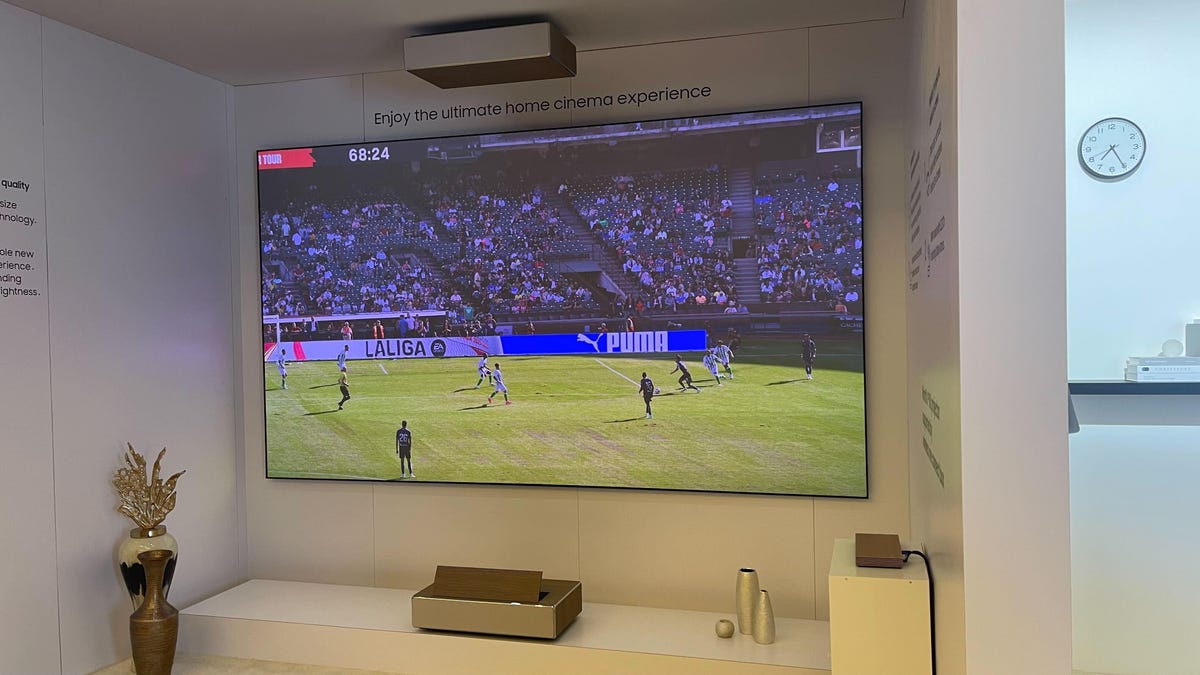The Super Bowl is the biggest television event of the year and it’s being played in Las Vegas next month. Right now the biggest televisions are being unveiled in the very same town at CES 2024, which I fondly think of as the Super Bowl of TVs. As CNET’s TV reviewer I’ve been coming to Vegas and checking out the newest TV technology for more than 20 years. And this year the screens are bigger and brighter than ever.
Here are the best and most noteworthy new TVs of CES so far. As usual with CES most don’t have pricing yet, and most will be available to buy this spring or summer.
LG transparent OLED TV
Over the years I’ve seen a lot of see-through displays, so trust me to see through the hype. These screens look cool: They’re basically windows imbued with moving images. I’ve always felt they’re a better fit for stores or digital signage than in the home as actual TVs, but LG’s newest incarnation has me intrigued. It’s the first transparent display that will actually be sold to consumers, as opposed to businesses.

The OLED T, as the company calls it, can transform between a transparent display showing fish, animations, the weather outside or nothing at all, into something much closer to a normal TV. At the touch of a button, a sheet of black film rises up behind the transparent window and blocks the view of what’s behind, and the resulting image looks like a TV. The OLED T joins a long tradition of TVs that try to be unobtrusive, and it succeeds as well as any. And this beinf a 77-inch OLED, it’ll be expensive when it ships this summer, but the idea is unique enough to make it one of the best TVs of CES.
Read more: This Impressive LG Transparent OLED TV Transforms Into a Fish Tank
Samsung S95D glare-free OLED TV
One of my pet peeves as a TV reviewer and general picture quality snob is reflections. Glare from normal room lighting, windows and even a white shirt or couch can reflect in standard glossy screens, and usually OLED TVs have some of the glossiest. Not the Samsung S95D. This high-end OLED television has a new screen finish that, in the brief eyes-on test I was able to conduct at CES, really does seem to make reflections and glare less noticeable. I won’t be able to test it thoroughly until it ships later this year, when I may discover some tradeoffs in Samsung OLED’s typically awesome image quality, but so far, so impressive.

Read more: Samsung OLED TVs Improve Anti-Glare Screen for Bright Rooms
TCL 115-inch mini-LED TV
If you thought 98-inch TVs were big, well, you thought right. But TCL’s 115-inch TV makes 98-inch screens look downright puny. The 115QM891G is the biggest mass-market TV revealed at CES 2024 and it’s impressively bright. TCL says its mini-LED backlight produces 5,000 nits of peak brightness and 20,000 local dimming zones.
TCL makes my favorite TV for the money, the QM850, and this model is its much, much bigger and brighter brother. The 115QM891G will cost around $20,000 when it comes out later this year, but that’s cheap compared to Micro-LED models this size and larger.

Read more: TCL’s Huge 115-inch TV Is Among the Biggest, Brightest Screens I’ve Seen
Hisense 110-inch mini-LED TV
Welcome to TCL and Hisense’s my-TV-is-bigger-and-brighter arms race. Yes, the TCL is 5 inches larger (win!) but the Hisense 110UX is — according to Hisense — twice as bright. I had to do a double-take when the company told me exactly how bright: 10,000 nits. To put that in perspective, the brightest TVs I’ve ever measured are around a quarter as bright (2,500 nits).
Add to that another even more impressive specification: the 110UX has 40,000 local dimming zones. That’s twice as many as the TCL, if you’re counting, and should amount to an unbelievable level of light output and contrast. Hisense didn’t announce pricing but I bet the 110UX costs even more than the TCL.
Read more: Hisense’s Huge 110-Inch TV Maxes Out Mini-LED Brightness
Roku Pro Series mini-LED TV
Roku makes what continues to be my favorite smart TV system, thanks to its simplicity, constant updates and best-in-class search results. Since TCL switched to the Google TV operating system, Roku has started producing its own TVs, and the Pro series has the most promising specifications yet, with a mini-LED backlight and QLED color. We’ll have to wait for the review to see if it stands up to competitors, however.
Read more: Roku Pro Series TVs Step Up in Size, Image Quality for 2024
Samsung’s transparent Micro-LED display
So this isn’t an actual TV (yet) and it’s not even available in stores, but it makes the list thanks to sheer coolness. Samsung is trying to one-up LG, as usual, and this time it’s over who has the better see-through tech. In the demos Samsung set up, its transparent Micro-LEDs did look brighter and more colorful to me, which isn’t surprising since that tech has always has better brightness than OLED. The issue, as always with Micro-LED, is the cost.

Read more: Samsung’s New Transparent Micro-LED Boosts Picture Quality of See-Through Screens
TCL QM851 series mini-LED TV
I called the predecessor to this TV my favorite for the money last year. The new version should be even better and cost the same. TCL improved the light output by nearly double, jacked up the number of local dimming zones and added a couple more extras, including a 2.1.2-channel Dolby Atmos sound system and a NextGen TV tuner. The company will continue to face stiff competition from Hisense and others for the TV value crown in 2024, but the QM851 looks like a front-runner so far.

Read more: TCL Took My Favorite Value TV, Bumped the Brightness and Kept the Same Price
LG M4 series wireless OLED TV
LG debuted its wireless OLED TV last year in the M3 series, and the new version looks to be better in every way. The new M4 is brighter and it has the same panel tech used on the OLED G3 — which happens to be the best TV I’ve ever tested. It’s also available in a 65-inch size, which should make it less expensive.
The main appeal of this TV is its wireless connectivity: Instead of plugging HDMI devices like game consoles into the back of the TV, you plug them into a separate box. The picture is sent from the box to the TV without wires, although you still need to plug it in for power so it’s not completely wireless.
Read more: LG’s Wireless OLED TV Gets More Attainable at 65 Inches
Samsung Premiere 8K wireless projector
Samsung doesn’t make a wireless TV to match LG’s — yet — but it did debut something arguably even cooler. No, it’s not technically even a TV, but the Premiere 8K wireless projector deserves an honorable mention on this list anyway. It’s an ultrashort-throw projector, meaning it’s designed to sit close to the wall and still produce a huge image, such as the 150-inch screen seen in the image below.
Samsung says this is the first 8K-resolution projector to be wireless, with a similar box-across-the-room arrangement as the LG M4 (and yes, you still need to plug in the projector itself). It has a new Lightwarp feature that “turns any object in the room into an interactive display surface,” according to Samsung, using projection-mapping technology.

Read more: Samsung’s The Premiere Projectors Make Your Room a Touchscreen
That’s a look at some of the best TVs of CES 2024. Stay tuned to CNET for more details and full reviews once the new 2024 TVs hit the market.
